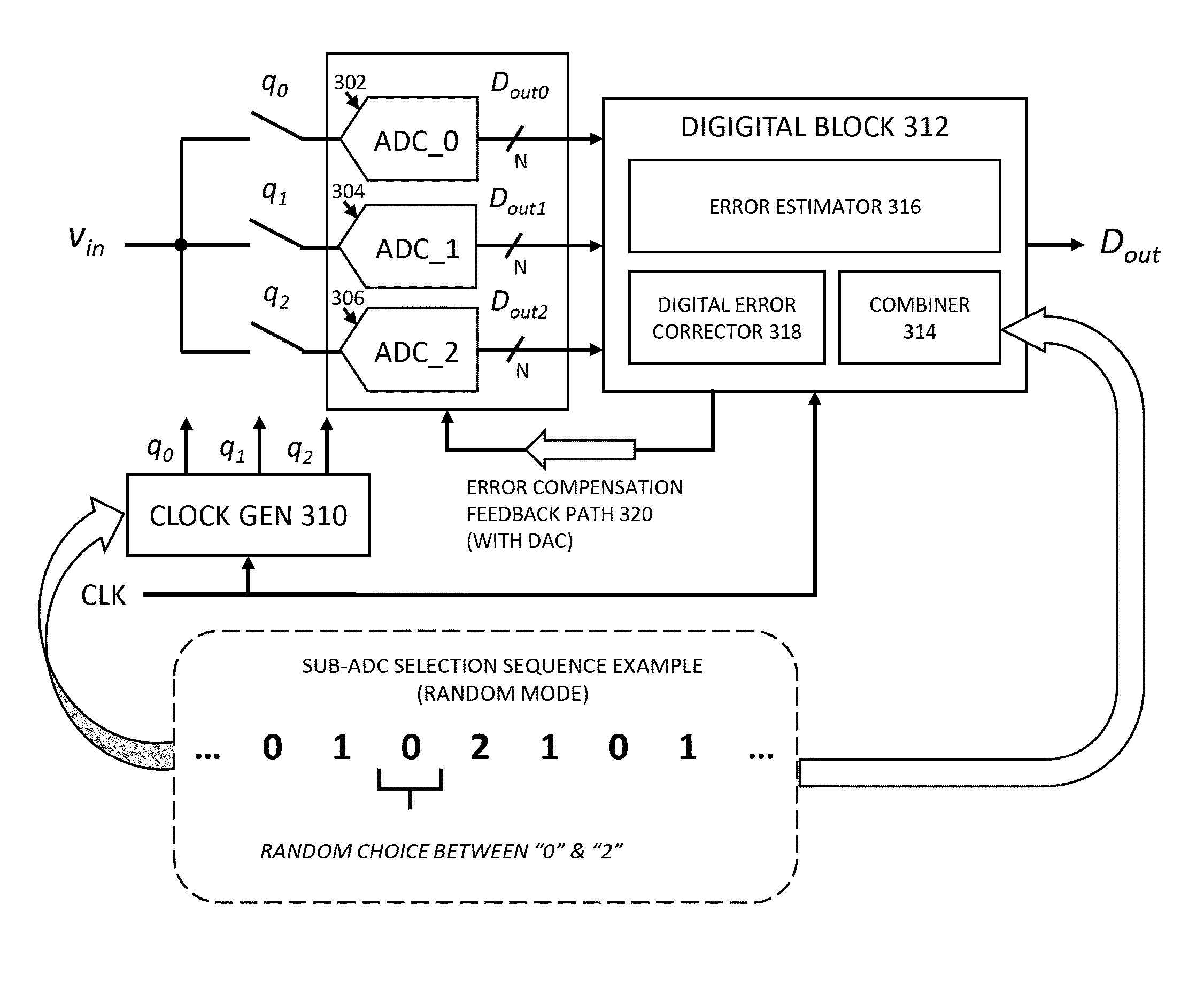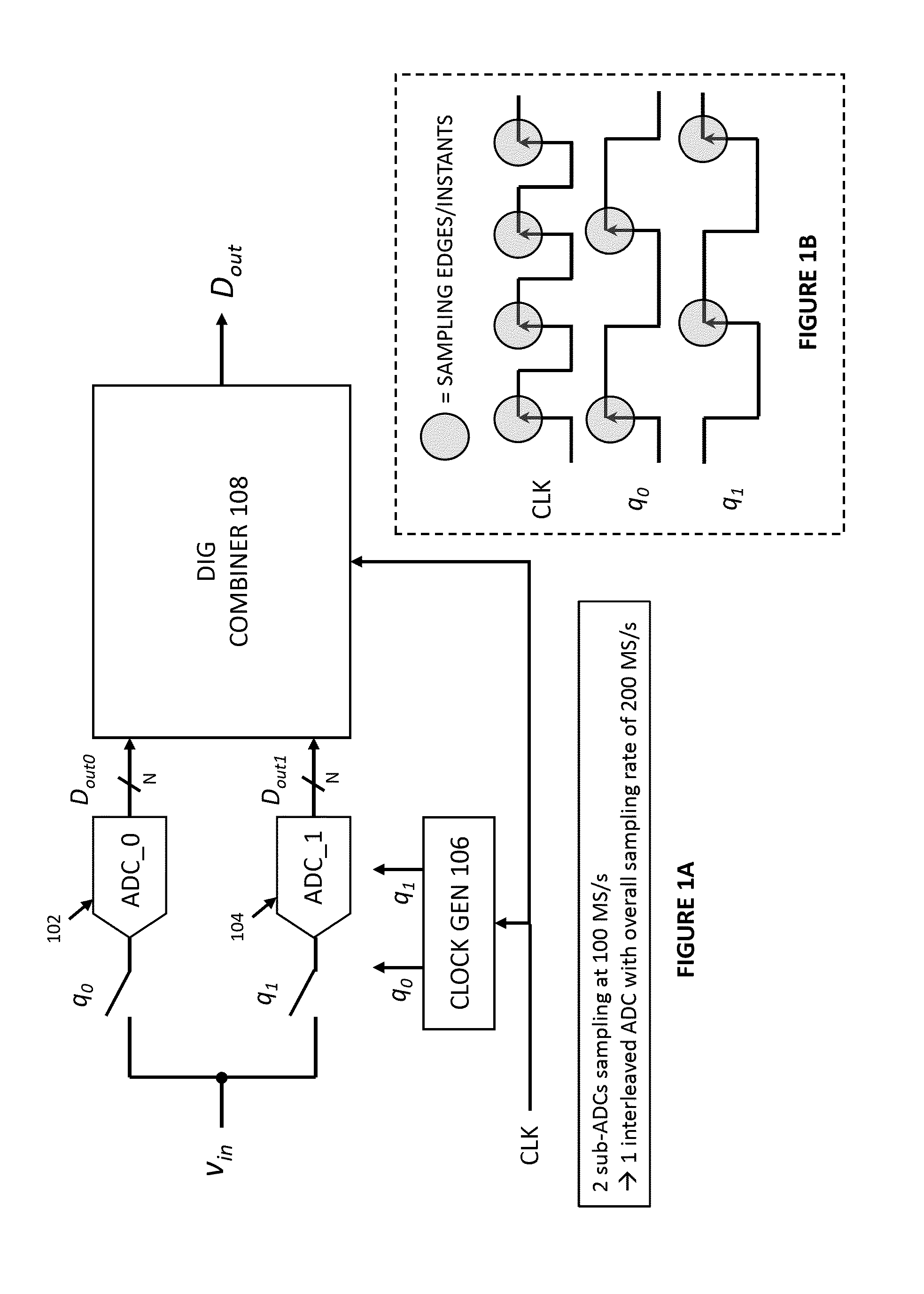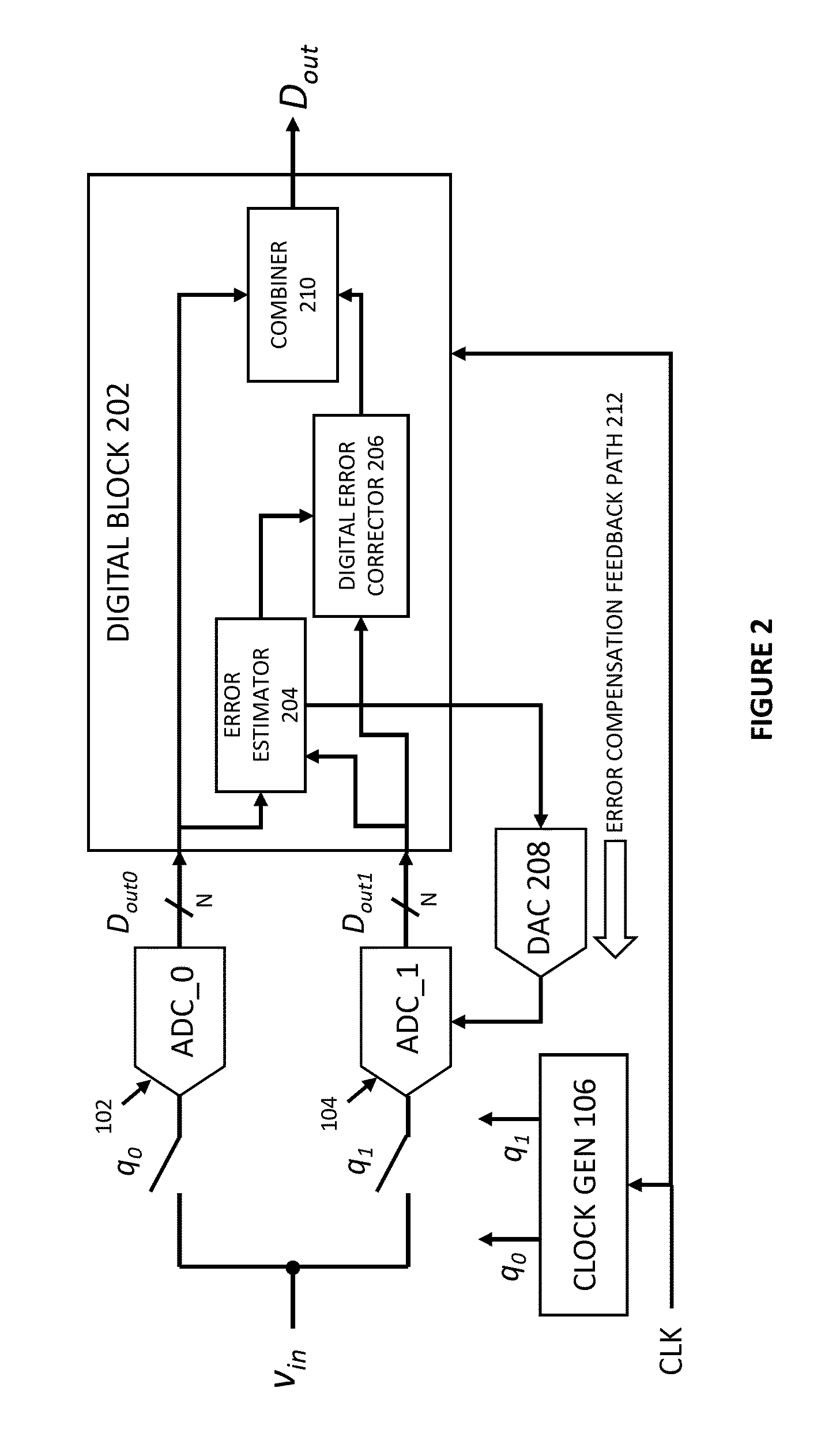Methods and systems for reducing order-dependent mismatch errors in time-interleaved analog-to-digital converters
a time-interleaved analog-to-digital converter and order-dependent technology, applied in the field of integrated circuits, can solve problems such as digital outputs that exhibit mismatch errors between m sub-adcs
- Summary
- Abstract
- Description
- Claims
- Application Information
AI Technical Summary
Benefits of technology
Problems solved by technology
Method used
Image
Examples
Embodiment Construction
[0015]Basics of Analog-to-Digital Converters
[0016]Analog-to-digital converters (ADCs) are electronic devices that convert a continuous physical quantity carried by an analog signal to a digital output or number that represents the quantity's amplitude (or to a digital signal carrying that digital number). An ADC is usually defined by the following application requirements: its bandwidth (the range of frequencies of analog signals it can properly convert to a digital signal), its resolution (the number of discrete levels the maximum analog signal can be divided into and represented in the digital signal), and its signal to noise ratio (how accurately the ADC can measure signal relative to the noise the ADC introduces). Analog-to-digital converters (ADCs) have many different designs, which can be chosen based on the application requirements.
[0017]Understanding Time-Interleaved ADCs
[0018]Interleaving is a technique used to increase the sample rate of ADCs. Many low-speed ADCs can be us...
PUM
 Login to View More
Login to View More Abstract
Description
Claims
Application Information
 Login to View More
Login to View More - R&D
- Intellectual Property
- Life Sciences
- Materials
- Tech Scout
- Unparalleled Data Quality
- Higher Quality Content
- 60% Fewer Hallucinations
Browse by: Latest US Patents, China's latest patents, Technical Efficacy Thesaurus, Application Domain, Technology Topic, Popular Technical Reports.
© 2025 PatSnap. All rights reserved.Legal|Privacy policy|Modern Slavery Act Transparency Statement|Sitemap|About US| Contact US: help@patsnap.com



